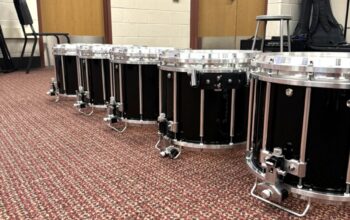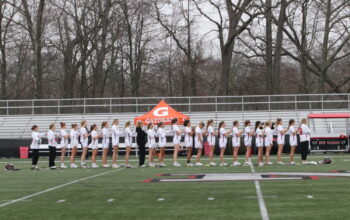Danielle O’Malley, Managing Editor
@domalley_
For many athletes, the offseason is a time to rest, recover, and rejuvenate. A time to get a mental and physical break after grueling seasons, triumphs, and defeats. A time for them to clear their head and come back the next year stronger than ever. However, this isn’t the case for every athlete. Some continue to play their sport off-season, pursuing their quest for greatness. These athletes aren’t doing this just for fun; many of them are looking to get recruited by a college for their respective sport.
Last year, senior Claire Pellegrino committed to the University of Virginia to continue her squash career. Her impressive performances were key in being noticed at the collegiate level. “For squash, a good performance meant doing well in tournaments to grab the attention of the coaches that were watching or had been watching you,” Claire said.
Another contributing factor in the process was her communication with coaches. “There were only a few emails here and there, but the worst part about it was anxiously waiting for that email back,” Claire said.
Despite limited communication, Claire tried to establish relationships with the coaches she was talking to. “I was all about reaching out to coaches and expressing my interest in each school. Talking on Zoom or through email about what you are looking for in a school and what they are looking for in a player is very important, especially for making the final decision.”
Junior soccer player Paige Place, who is currently in the midst of her recruitment process, echoed this sentiment. “It’s important to keep talking to coaches and make sure they know you’re interested in their program in order to develop and maintain your relationship with them,” Paige said.
As a junior multi-sport athlete, Paige has a very tight work schedule. Managing her school work with sports and her social life has been an ongoing learning experience for her, and one that is necessary in order to play at the collegiate level. “The process is difficult to manage with school because on top of your work, you have to be looking at colleges, which is still two years away,” Paige said. “It’s exciting to go on calls and email or text with coaches, but it can be annoying at some points.”
In addition to the battle of time management, athletes also have to deal with turning down schools. “Turning down a school is very difficult. Going into the recruiting process, I never expected to have to talk to a coach and tell them I’m looking elsewhere, and when that time came, you can say I was scared,” Claire said. “Telling a coach you have been talking to that you are no longer interested is definitely hard. But in the end, when you really love the school you choose, that’s when you know you are doing the right thing.”
Even deciding whether or not you want to play a sport in college is a difficult decision. Paige spoke with numerous people in order to make her choice. “I spoke to a lot of athletes in college and who just went through the process to get their opinion of it,” she said. “Everyone’s process is really different, which took a lot of stress off and allowed me to realize that it will work out.”
Some of these differences in the process include different rules in which the athletes must abide by. “For NCAA schools, such as UVA, we weren’t allowed to visit the campus or anyone on the campus unless it was an official visit,” Claire said. “Not being able to see the school until halfway through the process definitely made it harder to decide where I would be happiest. However, I felt I always knew which school I wanted to go to.”
Regardless of how tough the process can be with all the requirements, Claire always knew she wanted to continue to play squash in college. “I have been playing squash all my life, I don’t think I would be able to just drop it after high school.”
On the contrary, Paige didn’t always know whether she wanted to play soccer in college or not. “It took me until the beginning of high school before I realized that I wanted to play soccer in college,” she said. “Then, through talking with coaches and other athletes, I realized I needed to start looking more into the commitment process and recruiting.”
Yet another unexpected aspect of the process Paige didn’t anticipate was how extensive it is. “I was expecting the process to be a lot less thorough. For example, you have to do just as much research on the school as the coach is doing on you,” she said. “You have to work to get your academics to align with the school’s needs, so it takes a lot of talking to coaches and time to make sure you have found the right fit.”
Claire got her recruitment advice from a source much closer to her, making her experience different. “When it came time for me to start looking at school at the beginning of my junior year, I was probably more prepared than others as my sister went through it already,” she said.
With this background knowledge, Claire was able to move through the process quicker than most. “I was fortunate enough to finish the recruiting process relatively early,” she said.
As Paige is still trying to find her perfect fit, she continues to visit various campuses when she has the time. “If a school I am interested in is playing nearby, I’ll go to a game. This not only keeps me involved with the process, but it also shows interest.”
Claire is a strong supporter of this tactic as she expressed advice for all those like Paige currently in the process. “Make sure to visit each school you are interested in multiple times and don’t put all your eggs in one basket. In other words, keep your options open,” she said.




